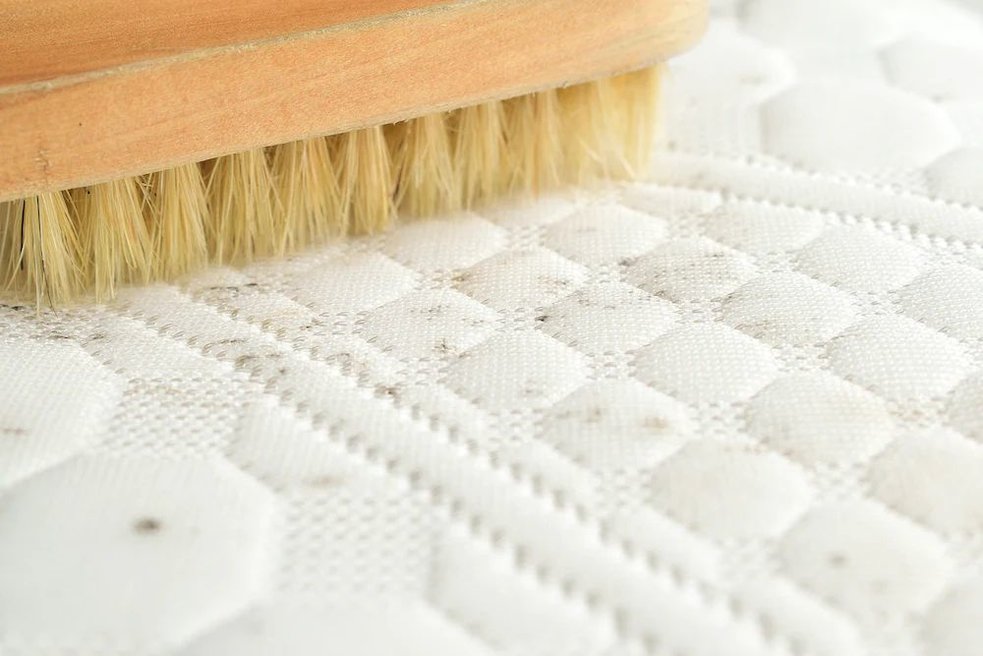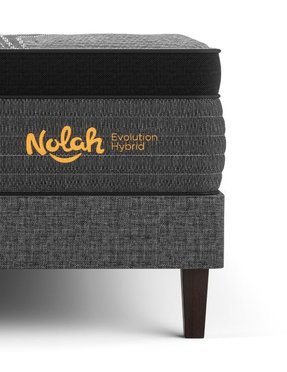Do I Need a Mattress Protector?
How Mattress Protectors Extend Your Mattress's Lifespan
With most high-quality mattresses costing between $1,000 and $2,000 for a queen, buying a new bed is a significant investment. So, when you choose a new mattress, you need to know that it was last through the wear and tear of regular use, the occasional spill or accident, a move, or whatever life throws your way.
Many mattress sellers offer warranties. However, they have limitations. Terms and conditions vary, but most mattress warranties don't compensate for normal wear and tear, scratches, rips, stains, discoloration, or infestations.
That's where mattress covers and protectors come in. Wrapping your mattress in a protective layer can extend the lifespan of your bed and ensure you get the most from your investment. It also supports better hygiene, allowing you to sleep safe and sound.
In this guide, we discuss all things mattress protection. We'll help you determine if you need a mattress protector and what to look for to best defend your bed from spills, tears, germs, critters, and other threats.
Why Do Mattresses Need Protection?
As with all home fixtures and furniture, it requires care to keep your bed clean and comfortable.
Maintaining a safe and hygienic sleep environment goes further than simply changing your bedding on a regular basis; it also means protecting your mattress.
What does your mattress need protection from? More than you may realize. Aside from the wear and tear of everyday use, mattresses face the following:
Sweat, Spills, Stains, and Humidity
Fluid reaching your mattress can do more than mar its appearance with an unsightly stain. Liquid can also cause damage by deteriorating foam components, weakening the adhesive that binds the layers of the mattress together, and rusting the metal coils in an innerspring or hybrid mattress.
That said, physical damage caused by the liquid itself isn't your biggest concern—it's bacteria that you need to worry about. When the liquid gets trapped in your mattress, it creates a dark and damp environment, the perfect breeding ground for mold, mildew, and more.
When the liquid gets trapped in your mattress, it creates a dark and damp environment, the perfect breeding ground for mold, mildew, and more.
Bacteria, Mold, and Other Allergens
You may not want to think about it, but mattresses are hotbeds for bacteria, pun intended.
Even if your mattress doesn't sustain liquid from an accident or spill, sweat, body oils, and water from humid air can still make their way into your mattress. As previously mentioned, bacteria thrive in dark and moist environments. Many mattresses lack ventilation, meaning the inside never gets a chance to dry.
Mildew, mold, fungus, bacteria, viruses, dead skin cells, dust, pet dander, you name it—they all gather in your bed. It depends on what exactly lives inside your mattress, but contaminants can create a musky odor, set off allergies, irritate your skin, and even get you sick or cause an infection.
Mold, bacteria, and other growth inside your bed isn't just unhygienic. It also degrades your mattress, shortening its lifespan.

Bed Bugs, Scabies, Dust Mites, and Other Creepy Critters
If you've ever dealt with a bed bug or scabies infestation, you know how these little critters can turn your life upside down. Their bites can be painful and unsightly and ridding them, their droppings, and their eggs from your mattress and home is time-consuming and difficult. Many people outright buy a new bed after a run-in with these destructive insects to avoid any chance of re-infestation.
While they don't wreak the same havoc as bed bugs and scabies, dust mites living in your bed can trigger allergies and asthma. According to the American Lung Association, "most exposure to dust mite allergens occurs while sleeping and when dust is disturbed during bed-making or other movements."
Mattress Protection Accessories
If thinking about all the allergens and germs that can live inside your bed makes your skin crawl, don't fret. If you practice proper sleep hygiene and have a protective layer on your mattress, you can minimize the risk of bacterial growth, insect infestation, and dampness within your mattress.
Fortunately, you have a lot of choices for mattress barriers. But before delving any further into the topic of mattress defense, you'll want to understand the distinction between the following mattress accessories.
Mattress Covers
A mattress cover is a thin fabric layer wrapped around a mattress to protect against sweat, bugs, bacteria, and other allergens. They also defend the foam (or other mattress material) from rips and other damage.
Today, many high-end mattresses come with a "built-in" or "native" cover that entirely surrounds the mattress. It depends on the manufacturer and model, but when a mattress comes encased in a cover, the cover is usually not intended to be removed. Be sure to check the label for care details, as opening or washing a non-removable cover can cause damage.
The majority of mattress covers use cotton, polyester, bamboo viscose, Tencel™, or a blend of these materials. While they wick moisture, mattress covers generally aren't fully waterproof. For that reason, many mattress companies recommend purchasing a waterproof mattress protector, even for mattresses with a built-in cover.
Mattress Protectors
What's the difference between a mattress cover and a mattress protector? People often use these terms interchangeably, but they serve slightly different functions.
As explained above, mattress covers come wrapped around your mattress and aren't intended to be removed. Unlike mattress covers, mattress protectors are purchased separately. These removable and typically washable barriers come in various designs, with some attaching to the mattress like a fitted sheet and others encasing the entire bed and zipping closed.
Like mattress covers, mattress protectors help preserve the bed's longevity and keep out germs, mites, other allergens, and unwanted critters. However, the best mattress protectors take mattress defense to the next level and are completely waterproof. They lock out spills, sweat, urine, blood, or any other liquid and prevent stains.
Waterproof mattress protectors typically feature a fabric surface with a "membrane" or backing. Common fabrics used for mattress protectors include cotton, polyester, nylon, bamboo viscose, Tencel™, and other proprietary blends. For the waterproof backing, most protectors use PVC (polyvinyl chloride or "vinyl") or TPU (thermoplastic polyurethane).
Mattress Encasements
The term mattress encasement refers to a barrier that completely encloses a mattress. Some are specifically designed to prevent a bed bug infestation or trap bed bugs in an already infested mattress. If you live in an environment at risk for bed bug infestation, you'll want this heavy-duty defense layer.
Mattress Toppers and Pads
While mattress toppers and pads add a layer of protection, their primary function is to make your bed more comfortable with added height and cushioning. If you want to protect your mattress but not change how it feels, then opt for a mattress protector. If you want a firmer, plusher, or cooler sleep surface, then go for a mattress pad or topper.
Toppers and pads sit on top of your mattress and usually range from 1 to 4 inches thick. They typically contain foam, latex, or another filler. This article focuses on mattress protectors, but our Mattress Topper Guide covers everything you need to know about toppers and pads.
3 Features You'll Find in the Best Mattress Protectors
If you want a mattress protector that will keep your bed clean and extend its lifespan, you need to know what features to look for.
An online search will bring up thousands of results, but many mattress protectors on the market are poorly designed or made with cheap materials. If you've invested in a high-end mattress and want to keep it for as long as possible, you should choose your mattress protector carefully.
To guide your search for the best mattress protector, we've compiled a list of essential qualities and design features to look for.
1) Waterproof, Breathable, and Cooling
What's the point of a mattress protector if it doesn't protect from sweat, spills, and accidents? To defend your bed against humidity, perspiration, urine, water, wine, coffee, tea, or any other liquid, you'll need a waterproof mattress protector.
That said, you don't want one that prevents air circulation. A breathable mattress protector allows steady airflow, which helps evaporate liquids quickly, especially with moisture-wicking materials. Breathability also prevents body heat from getting trapped underneath the protector and within the mattress. A barrier that's both moisture-wicking and breathable makes the best cooling mattress protector.
How can a mattress protector be waterproof and breathable at the same time? It all depends on the materials used. To achieve both, most waterproof mattress protectors combine a soft and stretchy fabric with a membrane, backing, or "poly-barrier" that locks out liquid.
Many waterproof mattress protectors use cotton, polyester, polyethylene, or a blend for the fabric component. A mattress protector's waterproof membrane typically uses PVC or TPU. This thin layer coats the back of the fabric, keeping liquid out. In general, TPU is stronger, softer, lighter, and better for the environment than PVC.
2) Stays Quiet and Maintains the Mattress Feel
While mattress toppers and pads modify your bed for added comfort and customization, mattress protectors shouldn't impact the feel of your mattress at all.
However, low-quality mattress protectors tend to be thick and plasticky, which can interfere with your mattress's contouring capabilities. They also tend to make a lot of noise, creating a crinkling sound whenever you shift positions.
To ensure your mattress protector doesn't make a sound or affect the feel of your bed, look for a model that's soft and thin but still durable. We recommend one made with cotton or bamboo viscose and a polyethylene backing.
Before buying, you should also read reviews to see if other customers mention the protector making noise or changing mattress feel.
3) Easy to Put On, Take Off, and Wash
To save yourself time and effort, you'll want a mattress protector you can easily remove, wash, and put back on your bed.
Typically, mattress protectors attach to your mattress with pocketed corners like a fitted sheet, corner straps, or they fully encase your mattress and zip closed. Zippered mattress covers are a bit harder to slip on and off your bed, but unlike the other models, they provide 360-degree coverage.
Before purchasing a mattress protector, be sure to check the care instructions. Most mattress protectors are machine washable, but not all are dryer-friendly.
Are Mattress Protectors Worth It?
Depending on the brand and quality, mattress protectors can cost anywhere from $10 to $200. So, even if you opt for a top-shelf model, you'll pay a fraction of the cost of your mattress to keep it safe and extend its lifespan.
If you have young kids, pets who sleep with you, or like to bring wine, tea, or any other drinks to bed, you're bound to have a spill or accident at some point. Plus, you never know what you or your pet could bring in from the outdoors attached to your clothes or their fur.
If you hope to prevent permanent damage, bacteria growth, or odors from building in any of these circumstances, then the security of a mattress protector is certainly worth the cost.
Disclaimer: Nolah does not provide medical advice. All resources on the Nolah blog, including this article, are informational only and do not replace professional medical counsel. Talk to your doctor about any health, mental health, or sleep-related issues.
You May Also Like These Articles
Don't Sleep on Exclusive Offers
Sign up for our newsletter, and you'll be the first to know about discounts, deals, and what's new at Nolah.
Ready for Bed?
